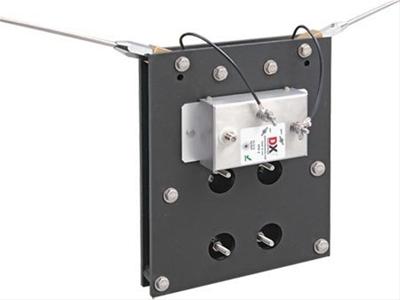 Dipole and broadband antenna efficiency is a constant debate. Efficiency most commonly is watts in, watts out. It’s well known that to radiate well, horizontal antennas should be at least a quarter-wave above the ground, at minimum, to reduce ground losses. With this in mind a 40 meter monoband dipole antenna needs to be at least 33 feet off the ground; a 20 meter antenna would be at least 16 feet, and so on.
Dipole and broadband antenna efficiency is a constant debate. Efficiency most commonly is watts in, watts out. It’s well known that to radiate well, horizontal antennas should be at least a quarter-wave above the ground, at minimum, to reduce ground losses. With this in mind a 40 meter monoband dipole antenna needs to be at least 33 feet off the ground; a 20 meter antenna would be at least 16 feet, and so on.
With a multiband broadband antenna, this is not practical. For an efficient 160 through 10 meter broadband operation your antenna would need to be mounted at least 130 feet high. If, on the other hand, the antenna is physically too short (compared to a quarter-wave radiator) you can mount it at 130 feet and the radiated power will be diminished when compared to a longer antenna, even though the broadband VSWR might look fine.
Broadband antennas are a perfect example of “you don’t get something for nothing.” They are convenient to use, but the trade-off is variable levels of “efficiency” at any given frequency. However, when space is limited they are a Ham’s lifesaver!
Now that antenna analyzers are fairly common, you might try this on Field Day: Connect to a resonant 20 meter dipole, then raise and lower the antenna from about 30 feet to ground level. You’ll find it interesting to watch in real-time as the VSWR vs. resonant frequency vs. reactance changes in relation to height. Height above ground does matter!
A word about NVIS: NVIS is Near Vertical Incidence Skywave. That’s a fancy way to say that your signal is going nearly straight up. Horizontal antennas operated below a quarter-wave in height exhibit more NVIS radiation than those placed higher. For a low-mounted 40 meter antenna, that means your signal is going to radiate upward, bounce off the ionosphere nearly above you, and return to Earth a few hundred miles away. No good DX operation there!
So, what’s our bottom line? Higher is better. Higher mounting of all horizontal antennas reduces ground loss, lessens VSWR fluctuation, reduces NVIS radiation and improves efficiency and DX operation.

